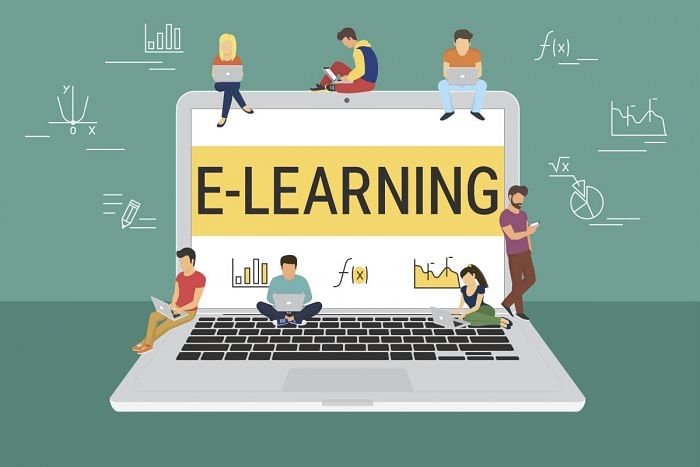
Learning time for students has reduced during the Covid-19 pandemic to less than four hours daily while around 10 per cent of students have no access to devices like mobile phones or television for studying, according to a survey by UNICEF India.
The survey conducted in six states -- Assam, Bihar, Gujarat, Kerala, Madhya Pradesh and Uttar Pradesh -- covering 6,435 respondents also said 50 per cent of teachers are spending more money on teaching materials now than before the closure of schools.
The impact on students of migrant and Scheduled Tribe families are more striking with the survey saying that they were falling behind in learning and overall progress.
According to the survey, 75 per cent of parents of children aged 5-13 years feel their child is learning less or significantly less than in school, and 67 per cent report that their child's overall progress is significantly behind or somewhat behind where it would be if schools were open. "Migrant students and ST students are worse off," it said, adding that more than 80 per cent of parents of such children felt that students are learning less than they would in school.
The survey showed that 97 per cent of students in urban areas spend three to four hours daily on studies now, the figure dips slightly in rural areas.
With more students perceived to be learning less, UNICEF India has recommended that the states could consider partnering with ed-tech platforms and NGOs to establish an assessment system for remote learning. Assessments will help government schools understand the concepts that need further teaching and how exams can be structured to ensure that the children are prepared for it.
"This will help guide what extra remedial classes can be provided to those that require additional support. In addition, governments should consider providing students with non-academic support as they are falling behind, including in areas such as social skills, physical fitness, and career readiness."
The Right to Education Act, 2010 stipulates an average school day of four hours over 200 days a year for Class 1-5 students and around 4.5 hours a day for 220 days a year for students in Class 6-8. Grade 9-12 students typically receive more instructional time.
With 10 per cent of students not having access to technology and left out of e-learning, UNICEF India has suggested that distribution of textbooks and other print learning materials is especially relevant for states with a relatively high proportion of students without technology access and a relatively high proportion requesting additional support.
Also read: E-education, if well utilised, can reduce inequalities in educational outcomes: Economic Survey
The survey also showed that WhatsApp is reported to be the most commonly used mode for remote learning -- 47 per cent of students aged 5-13 years and 55 per cent in the 14-18 years age group -- followed by textbooks (46 per cent and 42 per cent, respectively).
When it comes to gender, more boys (59 per cent) use WhatsApp for studies compared to girls (51 per cent).
Among students aged 5-13 years, private school students are more likely than government school students to use WhatsApp and they are more likely to use tech-enabled tools in general. Students (5-13 years) in government schools mainly learn via textbooks, home visits by teachers and YouTube.
There is a 24 per cent gap in usage of WhatsApp between urban and rural students aged 5-13 years, and 15 per cent gap for students aged 14-18 years.
Most students who use remote learning do so through more than one channel with 48 per cent of students in the 5-13 years age group and 61 per cent in the 14-18 years age group using multiple channels. WhatsApp and textbooks are the most common combination.
